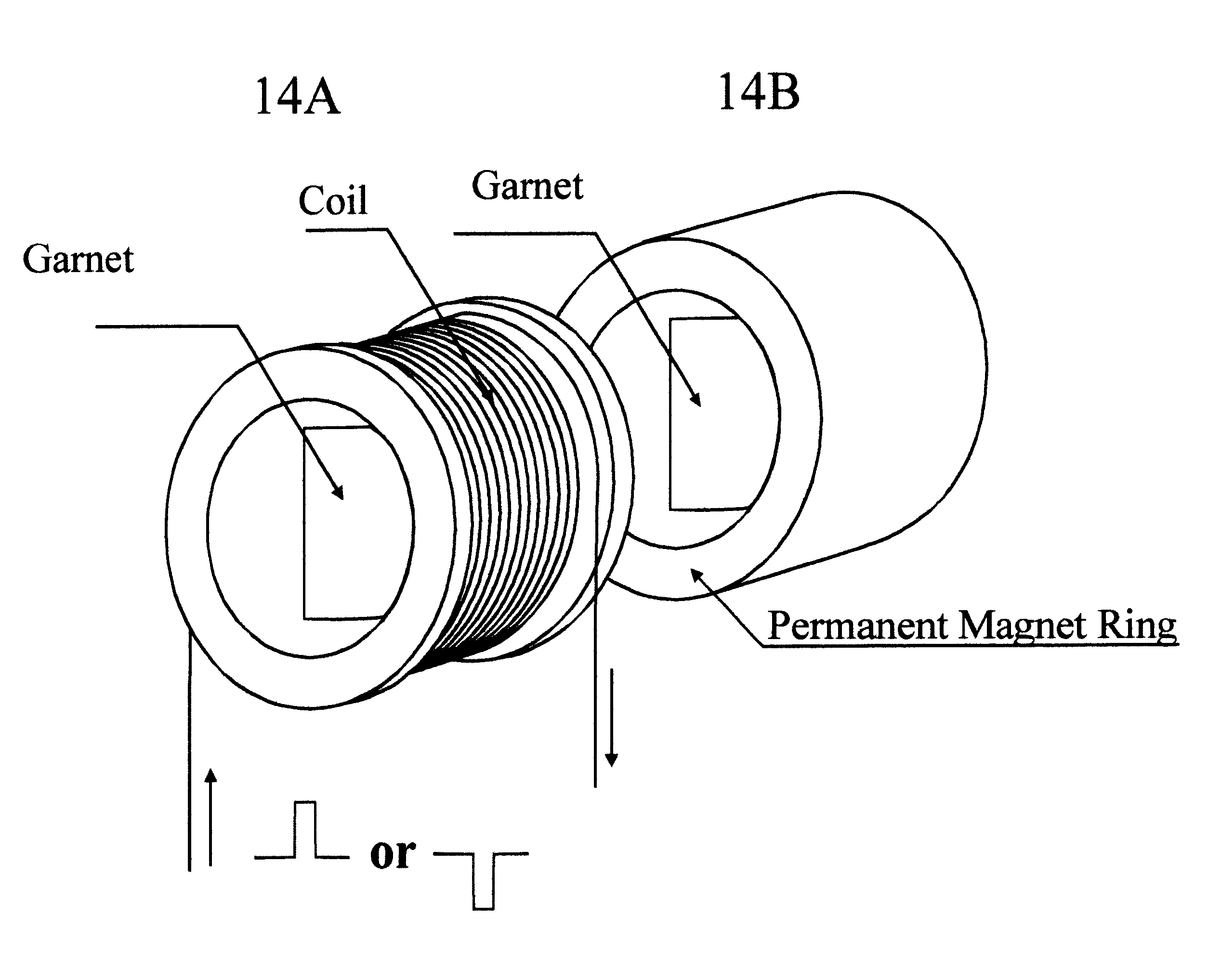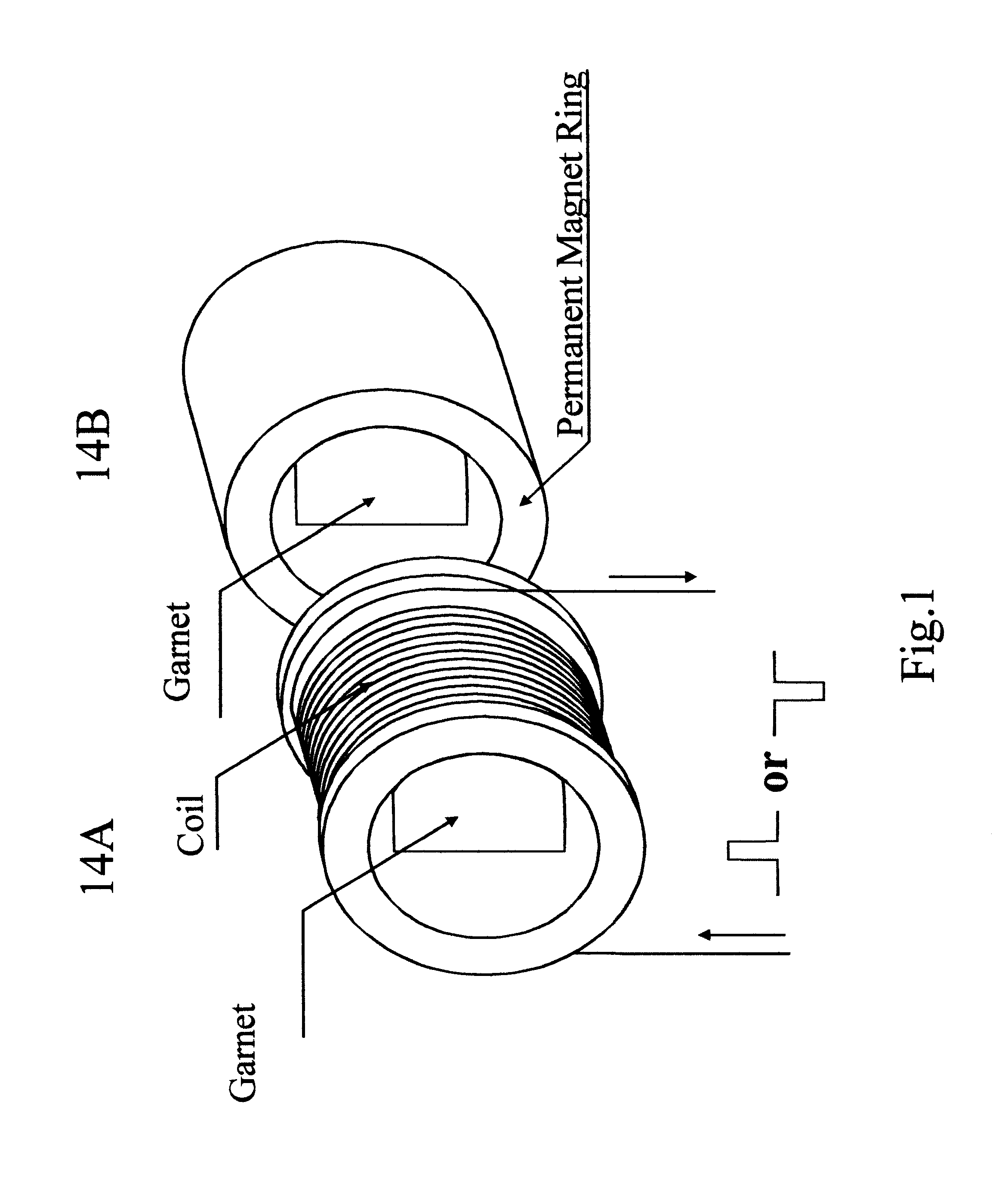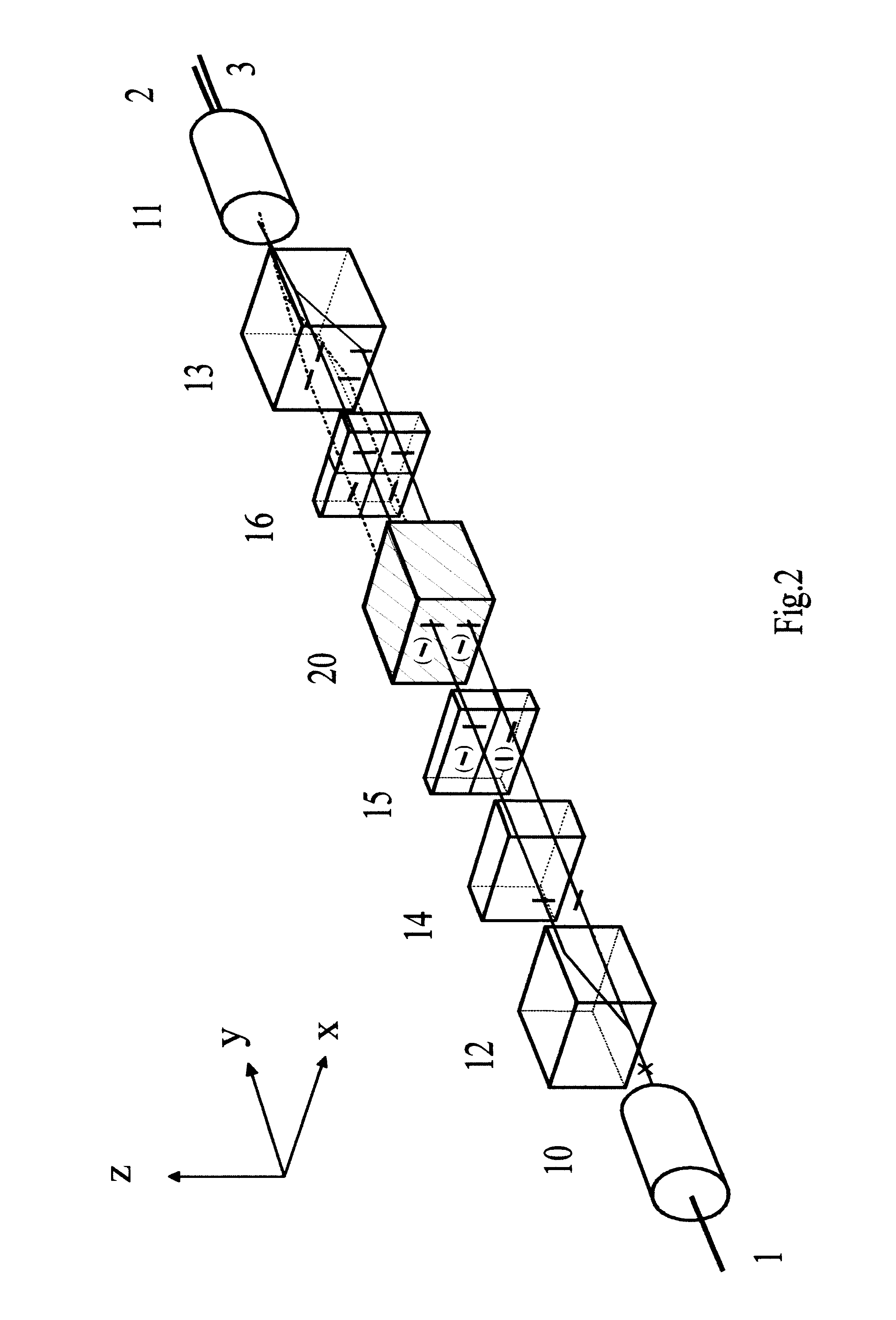Bi-directional optical switch
a bi-directional optical switch and switch technology, applied in the field of non-mechanical optical switches, can solve the problems of reducing the amplitude of the optical signal, not being widely adopted, and losing a large amount of signal strength,
- Summary
- Abstract
- Description
- Claims
- Application Information
AI Technical Summary
Problems solved by technology
Method used
Image
Examples
Embodiment Construction
The polarization insensitive solid-state optical switch of this invention has several advantages over prior non-mechanical optical switches. First, the inventive reciprocal Faraday rotator 14 enables light beam to propagate in both directions. The embodiment of the inventive switch is a reciprocal optical device, which advantageously allows bi-directional communications. Conventional magneto-optic switches are all limited to non-reciprocal operation. Second, the two optical ports on the same side are placed next to each other and share the same imaging element. Only one lens is used on each side of the switch, leading to fewer optical elements and a smaller footprint. Conventional optical switches have an arrangement wherein each optical port has its own individual imaging element. Third, the incorporation of a beam angle correction system 20 compensates for the angle separation between the two beams from the same imaging lens (dual collimator consisting fiber 2 and fiber 3). The ad...
PUM
| Property | Measurement | Unit |
|---|---|---|
| diameters | aaaaa | aaaaa |
| Curie temperature | aaaaa | aaaaa |
| optically transparent | aaaaa | aaaaa |
Abstract
Description
Claims
Application Information
 Login to View More
Login to View More - R&D
- Intellectual Property
- Life Sciences
- Materials
- Tech Scout
- Unparalleled Data Quality
- Higher Quality Content
- 60% Fewer Hallucinations
Browse by: Latest US Patents, China's latest patents, Technical Efficacy Thesaurus, Application Domain, Technology Topic, Popular Technical Reports.
© 2025 PatSnap. All rights reserved.Legal|Privacy policy|Modern Slavery Act Transparency Statement|Sitemap|About US| Contact US: help@patsnap.com



